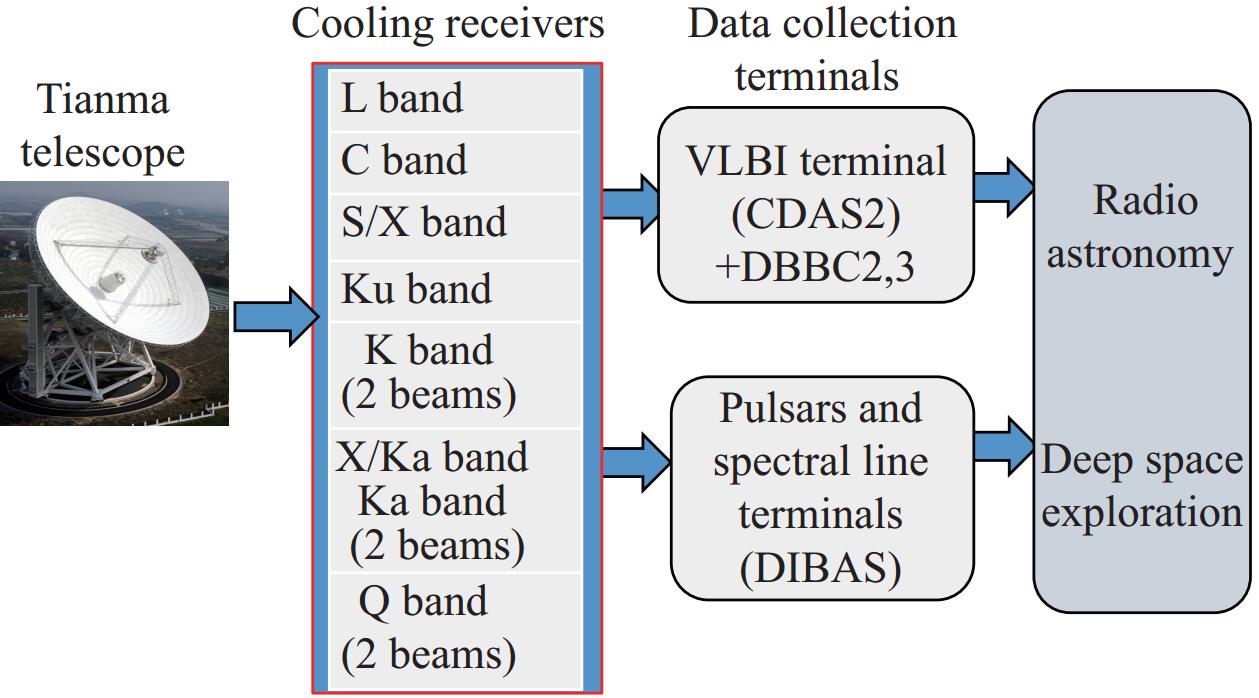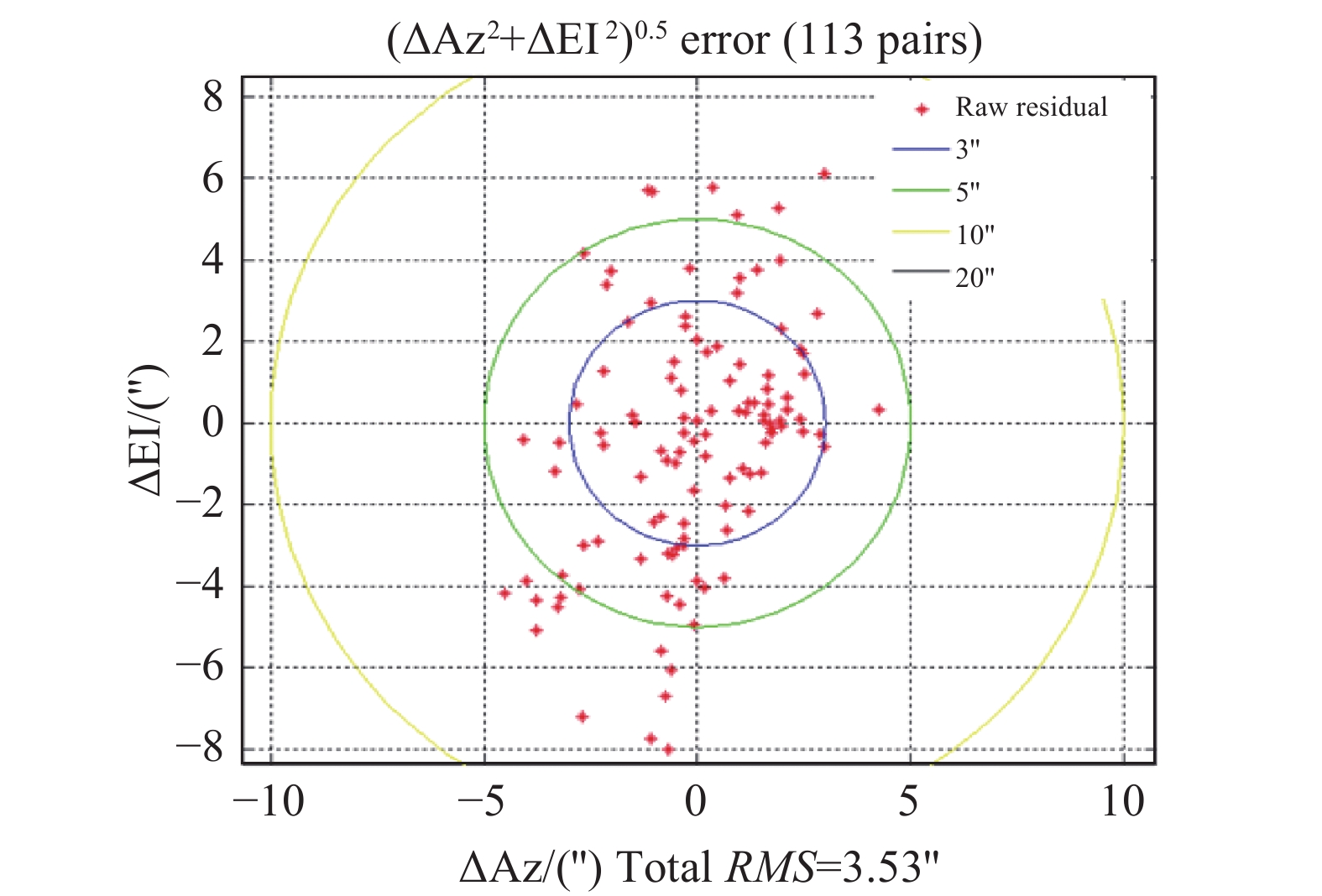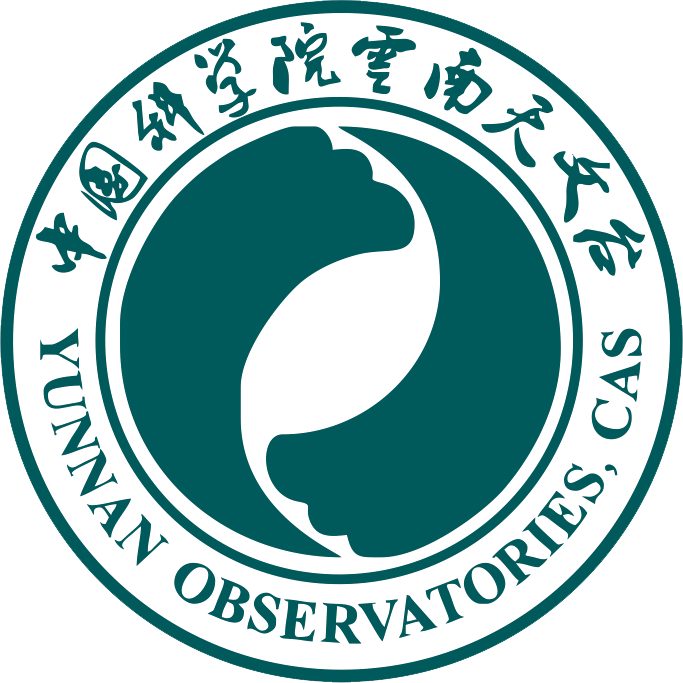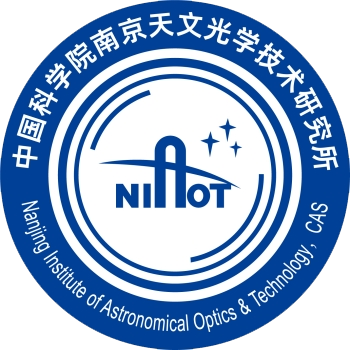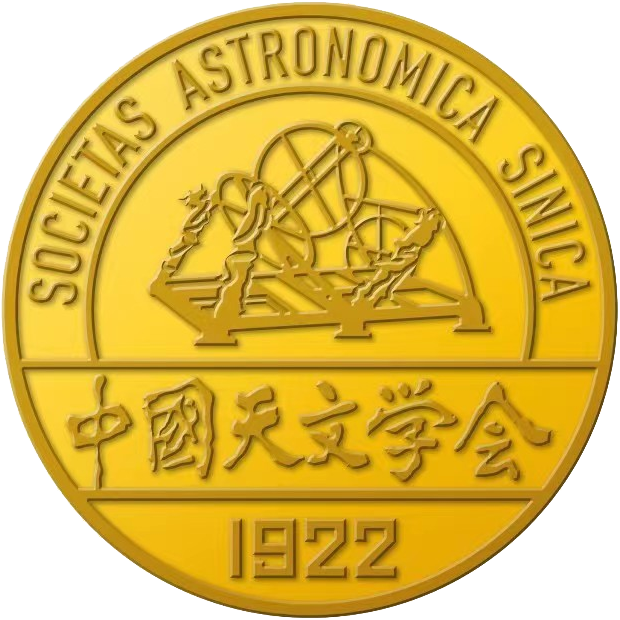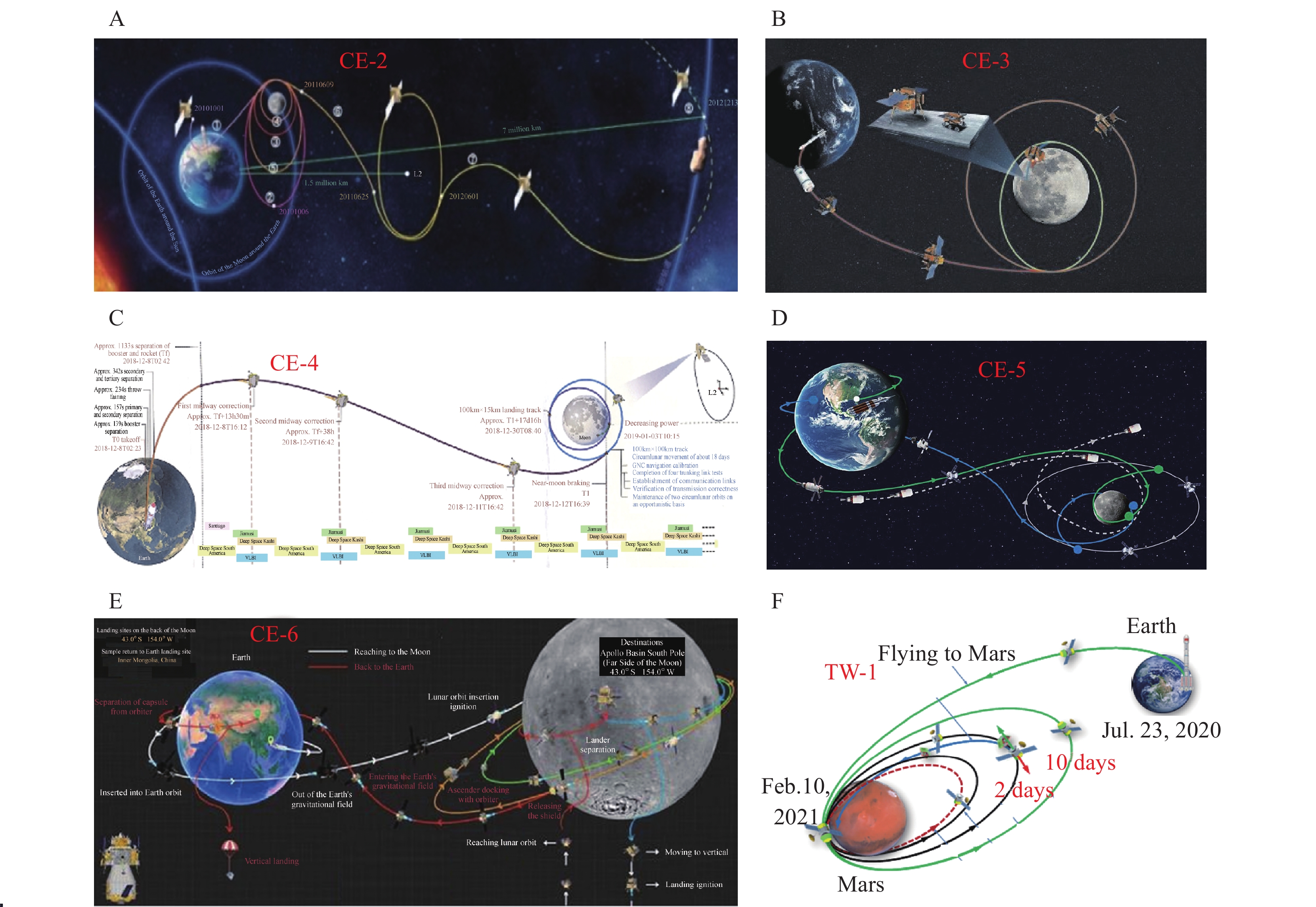
The flight orbits of Chang'e-2, -3, -4, -5, -6, and Tianwen-1. TMRT participated in the VLBI orbital determination and positioning tasks of these detectors.
Figures of the Article
-
![]() The TMRT with a partial enlarged view, showing the welding track, main reflector backframe and actuator, subreflector, and six-bar parallel adjustment mechanism[5].
The TMRT with a partial enlarged view, showing the welding track, main reflector backframe and actuator, subreflector, and six-bar parallel adjustment mechanism[5].
-
![]() Rotating platform for feed horn switching, allowing the observation feed to be rotated to the focal point.
Rotating platform for feed horn switching, allowing the observation feed to be rotated to the focal point.
-
![]() L, K, Ka, and Q band cooling receivers developed by the Shanghai Astronomical Observatory, CAS.
L, K, Ka, and Q band cooling receivers developed by the Shanghai Astronomical Observatory, CAS.
-
![]() Block diagram of the antenna, receiver and terminal of the TMRT.
Block diagram of the antenna, receiver and terminal of the TMRT.
-
![]() The actuator used for the main reflector adjustment system of the TMRT and the Q band efficiency curve measured with or without the main reflector adjustment system[6].
The actuator used for the main reflector adjustment system of the TMRT and the Q band efficiency curve measured with or without the main reflector adjustment system[6].
-
![]() The pointing error distribution obtained from the measurements of radio sources in different directions for the TMRT. The horizontal axis is the azimuth direction and the vertical axis is the elevation direction.
The pointing error distribution obtained from the measurements of radio sources in different directions for the TMRT. The horizontal axis is the azimuth direction and the vertical axis is the elevation direction.
-
![]() The flight orbits of Chang'e-2, -3, -4, -5, -6, and Tianwen-1. TMRT participated in the VLBI orbital determination and positioning tasks of these detectors.
The flight orbits of Chang'e-2, -3, -4, -5, -6, and Tianwen-1. TMRT participated in the VLBI orbital determination and positioning tasks of these detectors.
-
![]() VLBI residual time delay of Tianwen-1 after orbital determination[7].
VLBI residual time delay of Tianwen-1 after orbital determination[7].
Related articles
-
2024, 1(5): 275-283. DOI: 10.61977/ati2024035
-
Calculating real-time surface deformation for large active surface radio antennas using a graph neural network2024, 1(5): 267-274. DOI: 10.61977/ati2024036
-
2024, 1(5): 260-266. DOI: 10.61977/ati2024039
-
2024, 1(5): 247-259. DOI: 10.61977/ati2024038
-
2020, 17(1): 52-59.
-
2016, 13(4): 408-415.
-
2014, 11(1): 27-33.
-
1999, 0(S1): 130-133.
-
1999, 0(S1): 114-119.
-
1999, 0(S1): 86-89.


 Download:
Download:



